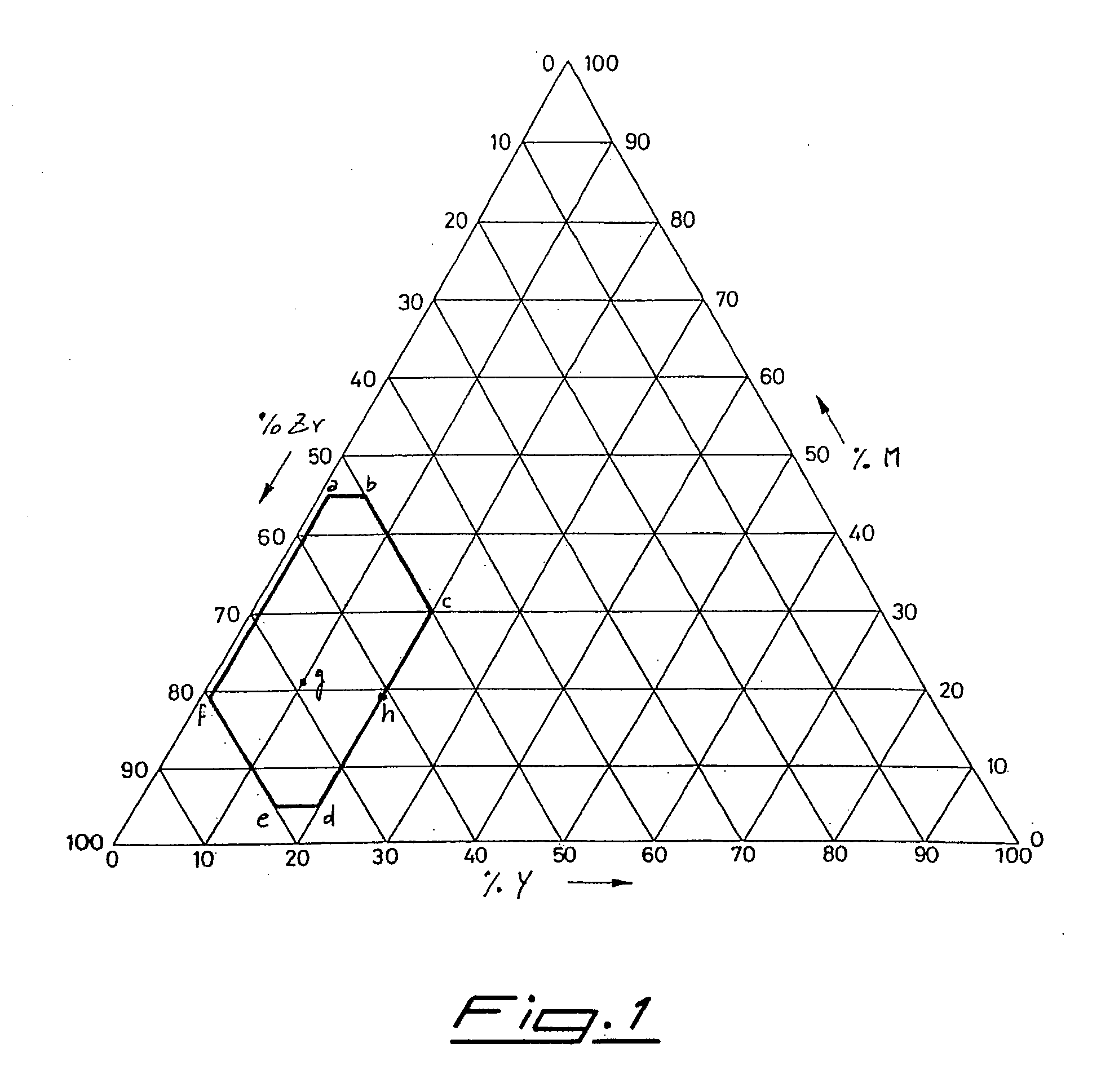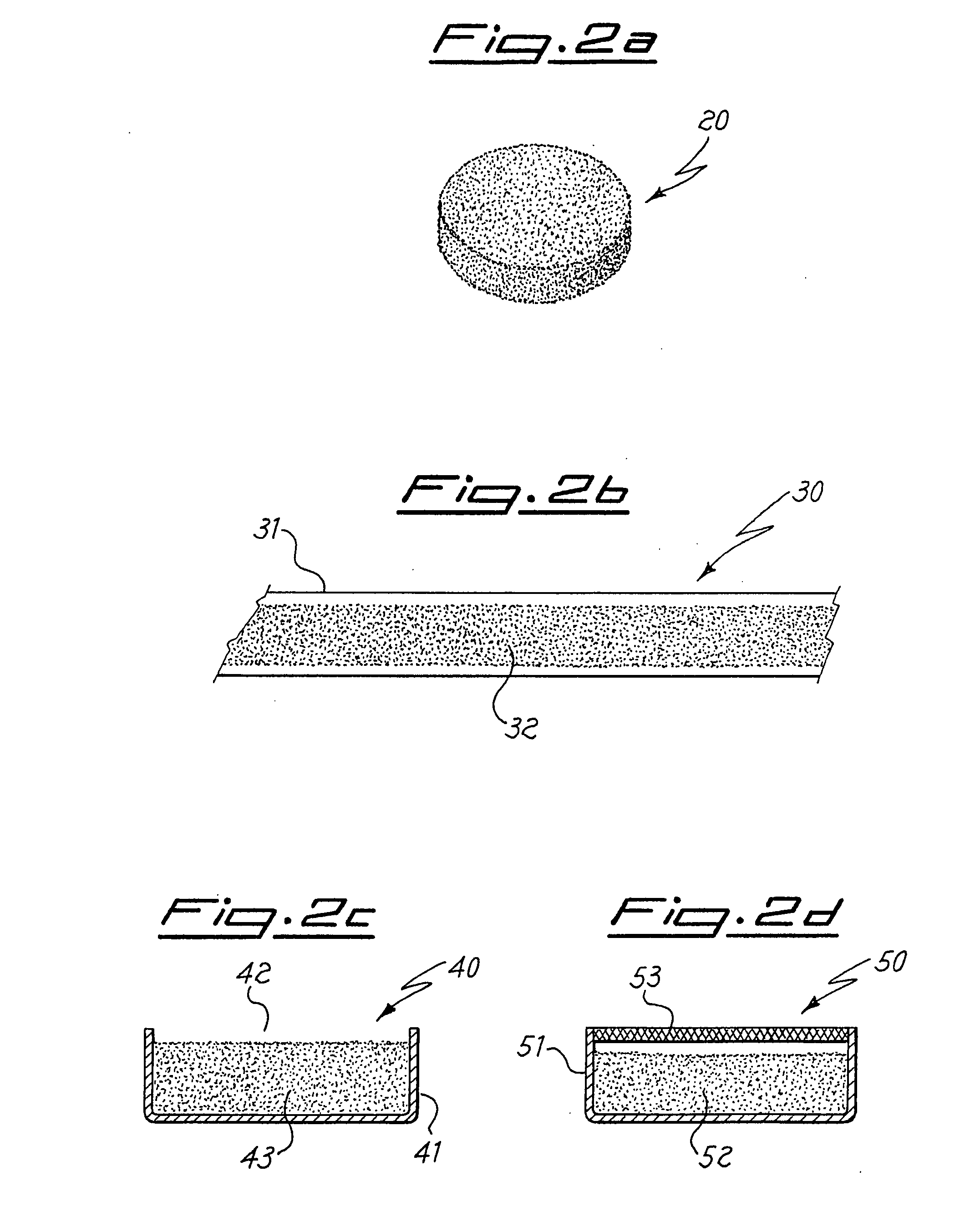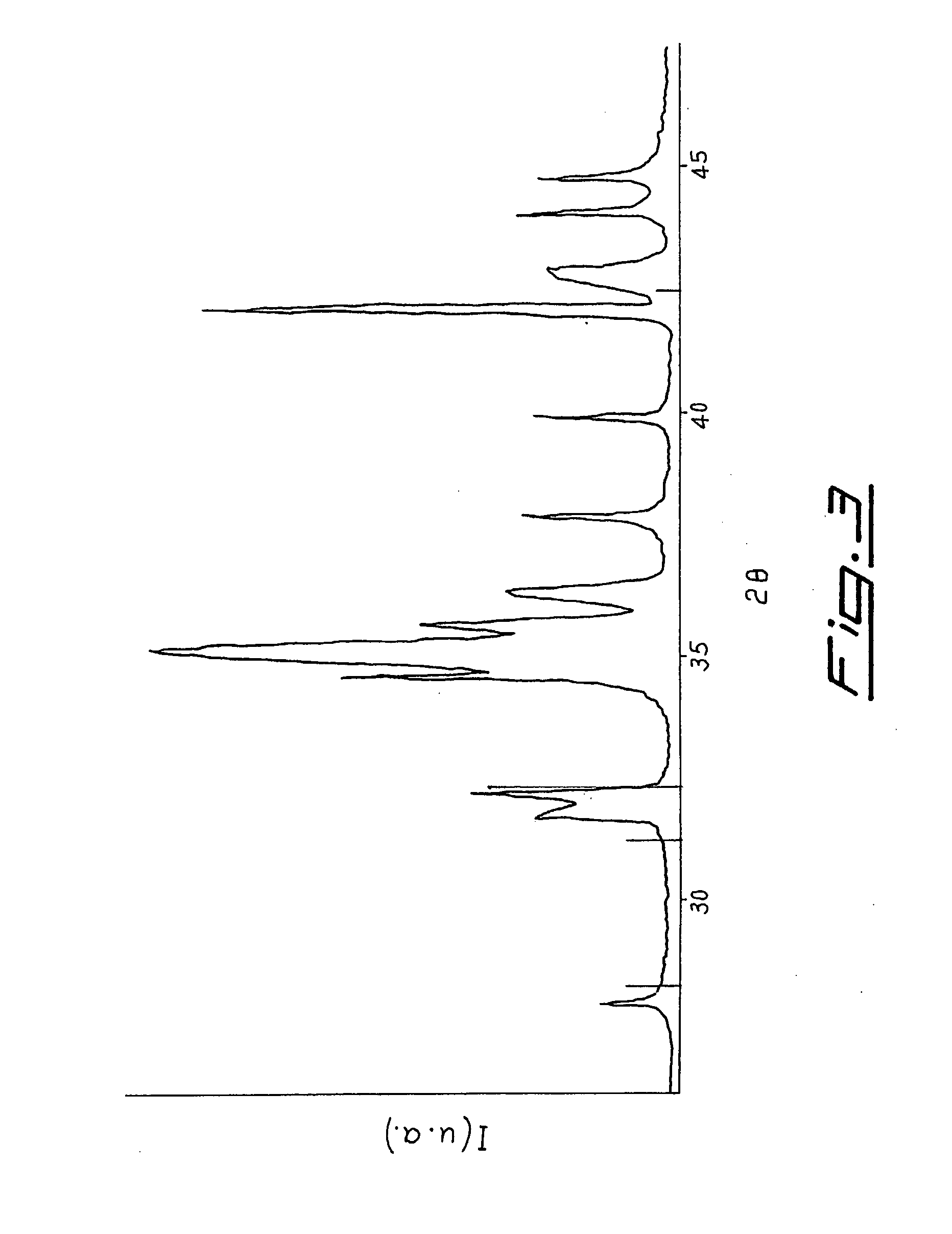Non-Evaporable Getter Alloys For Hydrogen Sorption
a technology of evaporation getter and alloy, which is applied in the field of evaporation getter alloy for the sorption of hydrogen, can solve the problems of not being suitable for any application, not being able to meet the requirements of any application,
- Summary
- Abstract
- Description
- Claims
- Application Information
AI Technical Summary
Benefits of technology
Problems solved by technology
Method used
Image
Examples
example 1
[0032] This example describes the preparation of several alloys of the invention.
[0033] A series of alloys is produced starting from the component elements in powder form, weighing the powders in the desired ratio as given in the following table, that reports the weights in grams for each element and the nature of element M for the different samples:
TABLE 1Sample no.Metal MZr (grams)M (grams)Y (grams)1Fe6921102Fe6119203Fe6520154Fe6426105Fe7416106Mn7020107Cr77.512.5108Al75.514.5109V632710
[0034] The powders are mixed and poured into a water-cooled copper crucible of an arc furnace under an atmosphere of 3×104 Pa of argon (so-called “cold-earth” technique). The temperature reached by the mixture during melting is of about 2000° C., temperature that is maintained during about 5 minutes. Since the preparations take place under conditions of a high thermal gradient, in order to enhance the alloy homogeneity any ingot melting is repeated four times. The ingots obtained by cooling after ...
example 4
[0041] A hydrogen sorption test is carried out on a pellet of each of samples 1, 2, 10 and 11. All the pellets are activated at 500° C. for 10 minutes. The sorption tests are carried out according to the procedure described in the ASTM F 798-82 standard with a test temperature of 400° C. and a hydrogen pressure of 4×10−3 Pa. These tests are said to take place under “dynamic conditions,” because the test chamber is fed with a variable flow of hydrogen, regulated by a feed-back system, in order to have a constant pressure of hydrogen over the pellet under test. The results of these tests are graphically represented in FIG. 5 as sorption speed, S, measured in cubic centimeters of sorbed hydrogen per second and per gram of alloy (cc / s×g), as a function of the quantity of sorbed hydrogen, Q, measured in cubic centimeters of gas multiplied by the sorption pressure (in Pascal) and normalized per gram of alloy (cc×Pa / g); the numbering of curves corresponds to the numbering of samples (thick...
example 5
[0042] The hydrogen equilibrium pressure of another pellet of sample 1 prepared as described in Example 1, is measured.
[0043] The measurement system is formed as a glass bulb, connected to a pumping apparatus through a liquid nitrogen trap which helps to keep a low background pressure during the test; the sample is heated from the outside of the bulb by radio-frequencies by means of an induction coil. The system is evacuated until a residual pressure of 1×10−4 Pa is reached. Under pumping the sample is activated by heating with radio-frequency at 700° C. for an hour. At the end of activation process the sample is brought to the temperature of 600° C. and the bulb is isolated from the pumping apparatus. A measured quantity of hydrogen is introduced into the bulb and the pressure variations are measured by a capacitance manometer; the pressure value at which the system stabilizes provides the equilibrium pressure under those conditions. Such a procedure is repeated several times whil...
PUM
| Property | Measurement | Unit |
|---|---|---|
| Fraction | aaaaa | aaaaa |
| Fraction | aaaaa | aaaaa |
| Fraction | aaaaa | aaaaa |
Abstract
Description
Claims
Application Information
 Login to View More
Login to View More - R&D
- Intellectual Property
- Life Sciences
- Materials
- Tech Scout
- Unparalleled Data Quality
- Higher Quality Content
- 60% Fewer Hallucinations
Browse by: Latest US Patents, China's latest patents, Technical Efficacy Thesaurus, Application Domain, Technology Topic, Popular Technical Reports.
© 2025 PatSnap. All rights reserved.Legal|Privacy policy|Modern Slavery Act Transparency Statement|Sitemap|About US| Contact US: help@patsnap.com



